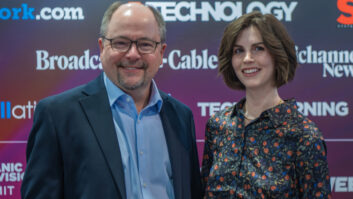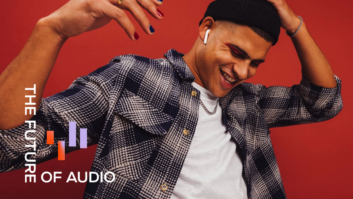Spotify, a music streaming service with 70 million nonpaying subscribers, is now offering programmatic audio 15- and 30-second spots to advertisers.

Les Hollander In doing so, it is the first major streaming service to adopt automation-driven programmatic ad insertion, which its free subscribers listen to in exchange for getting Spotify’s content without paying. (Thirty million Spotify listeners pay $9.99 a month to enjoy ad-free audio.)
The automated programmatic advertising approach allows ad buyers to specify the demographic aspects they want to reach with their commercials, then lets the buyers’ software purchase specific spot selections on their behalf on an ongoing basis.
In contrast, programmatic’s advocates say, traditional advertising requires humans to interact to select and book commercial spots. Not only is the process costlier, but human-based ad buying lacks the real-time responsiveness and optimization of programmatic ad bookings and purchases.
“Our value to programmatic advertisers is based on the first-hand audience information we collect that includes each listener’s actual age, gender, genre preferences and the playlists they like to listen to,” said Les Hollander, Spotify’s global head of audio monetization.
“Using this data, programmatic ad buyers can precisely target the people they want to reach, with their software helping optimize the buying details over time.”
VALUE
“Programmatic” has been making business headlines for a while now, in and beyond radio. Still, for salespeople accustomed to convincing local car dealers to buy time on stations, the whole idea of turning more ad sales over to an automated system may seem counterintuitive. After all, relationship-building and the “human touch” has long been viewed as the bedrock of radio spot sales. How could a computer-based system take its place?
The answer is that it can’t; but programmatic advertising is not aimed at this market. It is meant to be used to place ads opportunistically and automatically, which is why it is software-driven. Such ads can be purchased directly through advertising platforms, or via online auction sites where the value of the actual ad space goes up and down based on real-time availability and demand.
Spotify has experience in selling non-audio ads (e.g., web banners and video inserts). Meanwhile, “Spotify’s move into programmatic started in 2015 when they joined a2x, Triton Digital’s first-of-its-kind programmatic digital audio ad exchange,” said John Rosso, Triton Digital’s president of market development. Spotify’s “recently announced addition of other SSPs to the mix just confirms the growing importance of programmatic sales to both radio and internet music services,” he said.
SSP stands for supply-side platform, a piece of software that Spotify is using to sell the 15- and 30-second audio spots in an automated fashion. To do this, Spotify is working with cloud-based programmatic advertising platform provider AppNexus, online advertising technology company the Rubicon Project and The Trade Desk, a company that provides an automated buy-sell platform for Spotify’s programmatic advertising bookings. All three are helping Spotify execute programmatic advertising in a serious fashion.
TARGETING
Being able to buy and sell targeted ads automatically makes good sense to advertisers who want to purchase ad space quickly, and to content platforms that have the ad space to sell. But it is the narrow targetability and timeliness that programmatic advertising offers both sides of the transaction that underline its true value. (As well, backers believe, listeners benefit because advertising is more relevant to their demographic attributes and personal tastes.)
Les Hollander makes the point by citing the needs of a company selling yoga mats, a niche supplier that would waste money advertising to the public at large.
“Using Spotify’s first-hand audience data on age, gender and preferred music genres, a yoga mat advertiser can buy time on our music channels that yoga practitioners are most likely to be listening to,” he said. Spotify subscribers who have compiled personal playlists with the word “yoga” in them are prime candidates for such ads. After all, such listeners probably use mats, understand their attributes and are likely amenable to yoga mat ads that offer them something better than what they already have.
“If need be, we can even tailor the subscriber data down to the cellphone towers that they are downloading their Spotify yoga music playlists from in real-time,” said Hollander. “This allows our yoga mat advertiser the ability to target their ad sales on a truly local basis, if that’s what they want to do. The result is better value for them, both on the airtime and on the odds of people buying their mats as a result of these ads.”
This is one in a series about how radio organizations are exploring programmatic ad platforms. Tell us about your experience; email[email protected].












